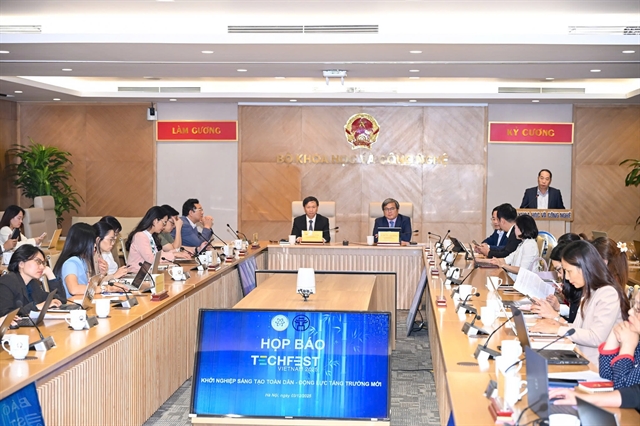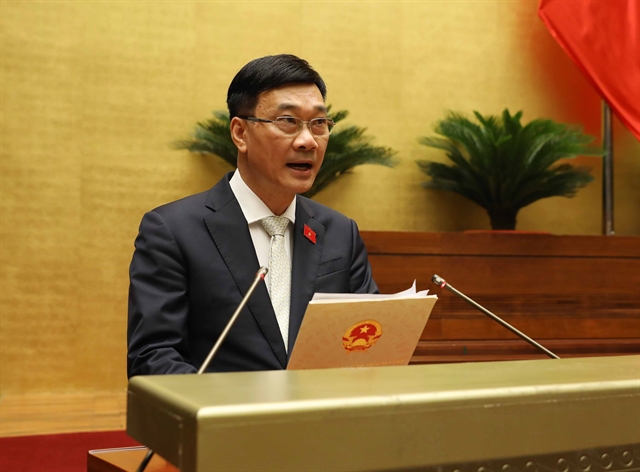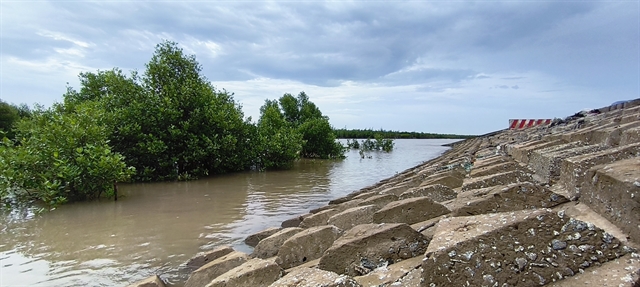 Politics & Law
Politics & Law

 |
| Chairman of the National Assembly's Economic Committee Vũ Hồng Thanh on Monday delivers the assessment of the Government's report for socio-economic performance in 2022 and the first months of 2023. — VNA/VNS Photo |
HÀ NỘI — Việt Nam might struggle to achieve the growth targets set for 2023 amid global downturn, Chairman of the National Assembly (NA)'s Economic Committee Vũ Hồng Thanh warned on Monday as he delivered the assessment for Government's report for socio-economic performance in 2022 and the first months of 2023.
Việt Nam's GDP expanded by 3.32 per cent in the first quarter of the year, a "very low" rate given that the country has completely reopened following COVID-19 restrictions, Thanh said at the freshly opened plenary session of the parliament.
In order to obtain the 6.5 per cent target for the whole of 2023, each remaining quarter would need to post a growth rate of about 7.5 per cent on average, the official said.
State budget revenue in the first four months decreased by 6.9 per cent compared to the same period last year.
The domestic economic sector continued to record a large trade deficit of US$6.62 billion.
Inflation rose by 4.9 per cent in the first four months, higher than the average consumer price index, indicating the weak absorptive capacity of the economy and the weak impact of monetary and fiscal policies, Thanh noted.
The average lending interest rate remained high (about 9.3 per cent per year), and credit growth by the end of April increased by a low 2.75 per cent compared to the beginning of the year, indicating difficulties in the absorptive capacity of businesses and the economy.
Non-performing loans tended to increase.
As Việt Nam is still a small economy but with great openness, the global economic situation puts great stress on the domestic situation.
He urged the Government to closely monitor the domestic and global economic situations to have appropriate and timely policies in response.
The committee also asked the Government to accelerate the progress of developing, evaluating, and approving national, regional, provincial, and specialised planning; address the causes of slow disbursement in order to promote the disbursement of public investment capital, the national socio-economic recovery and development programme, and the three national target programmes.
According to Deputy Prime Minister Lê Minh Khái, Việt Nam achieved or exceeded 13 out of the 15 main targets set for 2022, including GDP growth (8.02 per cent, against the target of 8 per cent), GDP per capita of $4,109 (higher than the target of $4,075), CPI kept at below 4 per cent, total export-import value at $371.3 billion (higher than the target of $368 billion) with a surplus of $12.4 billion, and public debt in check and within the limit.
However, two indexes, which are the contribution of processing and manufacturing industries in the national GDP and growth rate of labour productivity, did not meet targets (24.76 per cent against 25.5-25.8 per cent, and 4.8 per cent against 5.5 per cent), which reflects poorly on the quality of the economic growth overall.
Regarding the main tasks and solutions in the coming time, Deputy PM Khái stated that the global and domestic context continues to be complex and unpredictable, requiring all levels, sectors, and localities to make efforts to overcome difficulties, promote strong growth drivers, mobilise and effectively use all resources.
Khái stressed the importance of focusing on implementing 10 key tasks and solutions, including the maintenance of macroeconomic stability, keeping inflation in check, promoting growth, and ensuring major balances of the economy; and stepping up disbursement of public investment capital, with a target of achieving a disbursement rate of at least 95 per cent in 2023. — VNS




